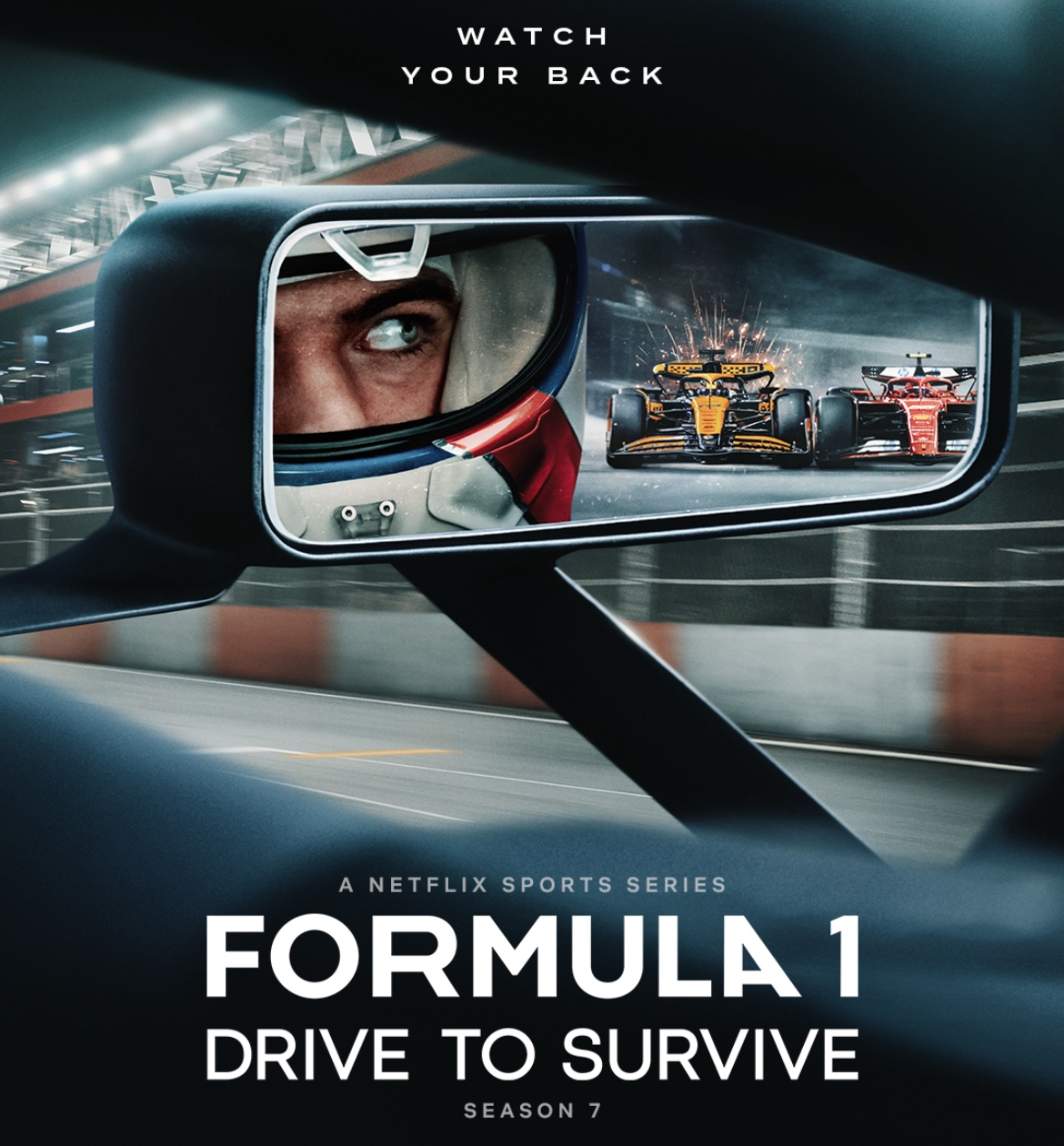
Sci&Tech Editor Sophie Webb reviews Drive to Survive, finding it to be an entertaining step into the world of Formula One – despite its inaccuracies
Images by
Instagram - @netflixca
Arguably, Netflix changed the game for Formula One. In 2019, the sport with decades of history was reinvented by Netflix’s all-access behind-the-scenes documentary Drive to Survive, with its capture of a youthful new audience. For me, Formula One was something vague and incomprehensible that my uncle used to waffle on about when I was young; while it certainly had its moments in popular culture, the 2020s have seen record ticket sales to races and a restoration of drivers to celebrity status. In other words, a new lease of life.
“This lifting of curtains, not just into the garage but into the drivers’ inner lives – their hopes and fears – is the magic of DTS.
Recently, Netflix dropped the seventh season of the documentary that changed the landscape of sport on TV: many other sports have tried to replicate its success with their own versions, such as Break Point for tennis and Full Contact for rugby. The new season of DTS charts the bitter on-track rivalry between four-time World Drivers’ Champion Max Verstappen, and the plucky British underdog Lando Norris. What we assumed, at the time, to be a blaze of Formula One finesse and glory is portrayed in a different light here: Norris comes across as anxious, and perhaps uncertain of his ability to challenge Verstappen. This lifting of curtains, not just into the garage but into the drivers’ inner lives – their hopes and fears – is the magic of DTS.
By now, the series has settled into its familiar formula of roughly one episode per season dedicated to each team on the grid, although Season 7 brought forth a deviation from this – with a delightful vlog-style episode (produced by the drivers themselves). Some viewers will tune in for the insight; the race data. Others watch for the nerve-wracking on-board race footage itself. Maybe it’s the meme-able team principals like Toto Wolff and Guenther Steiner, the latter of whom’s absence leaves a gaping hole in Season 7 (he parted ways with the Haas team last year). Personally, I’m obsessed with the scenes of drivers pottering about: at the supermarket, playing with their dogs, gossiping with each other; Season 7 treats us to Charles Leclerc picking up groceries (and getting his card declined). The show’s documentation of its cast’s off-track lives gives it a feel of Keeping Up With The Kardashians with race cars.
“The constancy of the Formula One machine, and the shocking twists and turns it spits out, is what keeps the series as thrilling as ever.
Season 7 sees the return of a colourful character from the Formula One of years past in Flavio Briatore, the old Benetton team principal and new Alpine executive advisor – an almost cartoonish villain set loose on the grid to cause division. His inclusion was not manufactured by Netflix but it feels almost like it could have been; the producers were probably salivating at the thought of Briatore’s return and the drama that would inevitably transpire. DTS has lots of moments of this nature; with every bombshell dropped in the Formula One news, it’s now routine to think of the producers at Netflix, scrambling to dispatch their camera crews to the scene of the crime. In Season 7, they certainly don’t shy away from covering last year’s controversy surrounding Redbull team principal Christian Horner. The constancy of the Formula One machine, and the shocking twists and turns it spits out, is what keeps the series as thrilling as ever.
“the decision to start marketing Formula One to women and girls was a stroke of genius
Diehard fans argue that the series makes a mockery of the sport, with its potentially staged or at least exaggerated scenes, and rumours that the editors make deliberate use of footage to portray friendships or rivalries between drivers which do not exist in reality. But sometimes the mood calls for froth – and anything that grounds sporting legends and portrays them as human can only improve the accessibility of their brand. This is evidenced by the rise and rise of Formula One’s young female fandom; Netflix viewers who have been transformed into fans of the sport itself. As it turns out, the decision to start marketing Formula One to women and girls was a stroke of genius: from stylish pink Ferrari jackets to the founding of the F1 Academy, a women’s division intended to provide young female drivers with opportunities and to allow young girls to see female drivers on the track. It makes you wonder why nobody thought of it before.
Long live Drive to Survive and this audacious legacy. Even if it does not provide a laser-accurate portrayal of the sport, naysayers can turn over to Sky Sports if they’re only interested in the races. DTS season 7 demonstrates that this surprise string on Netflix’s bow still has gas in the tank. Box box!
Comments